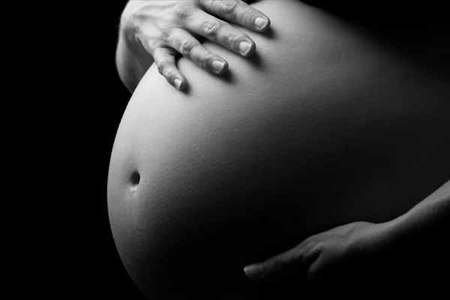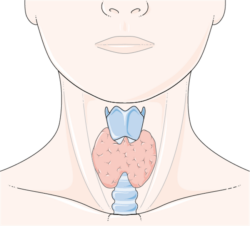Researching the role of vitamin D in pregnancy for this article, I unexpectedly blew inches of virtual dust from a page of medical correspondence published almost seven decades ago. With keen interest I read “Vitamin-D Requirements in Pregnancy,” published in a 1947 edition of the British Medical Journal. The author Edgar Obermer, MD asserted the necessity for English pregnant women to supplement with robust daily doses of vitamin D.
Perhaps Dr. Obermer was ahead of his time, or today we are behind in understanding the power of vitamin D. I think both are true. Nonetheless, his assertion about relatively high maternal vitamin D doses accentuates vitamin D’s importance during pregnancy. Today pregnant women typically supplement with prenatal vitamins, most of which only contain enough vitamin D to prevent rickets.
Unfortunately, taking prenatal vitamins without supplementing with extra vitamin D provides expectant mothers with a false sense of health for their babies and themselves. In this article, I address vitamin D’s role in pregnancy, recent evidence supporting the positive effect of vitamin D on expectant moms and their babies, and vitamin D supplementation guidelines for pregnant and lactating women and their infants.
A Healthy Pregnancy
Many people may not realize that vitamin D is actually a steroid hormone produced in our body. We manufacture vitamin D when we take a quality vitamin D3 supplement, expose our skin to optimal sunlight, or consume lots of wild-caught fatty fish or vitamin D3-fortified foods.
The female reproductive system comprises billions of cells. Every cell in the female reproductive system contains genetic codes as well as a receptor to receive vitamin D. Cells in the female reproductive system (including the ovaries, fallopian tubes, uterus, placenta, decidua, vagina, and breasts) are replete with vitamin D receptors.
When we have ample amounts of activated vitamin D in our cells, the vitamin D binds with its receptor to regulate genes in our reproductive system. For example, the vitamin D pathway genes affect in utero fetal development. Conversely, when the female reproductive system lacks activated vitamin D, genes essential to a smooth pregnancy and sound fetal health are not expressed.
Mom Needs Nutrients for her Health
Vitamin D is vital to a pregnant women’s health. An expectant mom with adequate vitamin D levels may enjoy a reduced risk of pregnancy complications including preeclampsia, gestational diabetes mellitus, Caesarian section, and preterm birth. However, low vitamin D blood serum levels are common in pregnant women.
The recent findings of a Canadian study published in the December 2014 edition of the journal Current Opinion in Obstetrics and Gynecology once again accentuate the importance of vitamin D to maternal health. Lead researcher Shu-Qin Wei, MD, PhD examined scientific evidence of the role of maternal vitamin D on pregnancy outcomes. Focusing on studies published between January 1, 2013 and July 1, 2014, she concluded: “Recent evidence supports that low maternal vitamin D status is associated with an increased risk of adverse pregnancy outcomes. Interventional studies demonstrate that vitamin D supplementation during pregnancy optimizes maternal and neonatal vitamin D status.”
A Seed for Healthier Babies
Vitamin D is vital to fetal bone and cell development. Medical research suggests some seeds for disease are sown before birth. Low vitamin D during pregnancy may be one of those seeds. Babies born to mothers with a vitamin D deficiency are more likely to develop a number of medical conditions including asthma; autism; soft bones (rickets, craniotabes); brain disorders; cardiovascular malformation; and type 1 diabetes mellitus.
A new study highlights the benefit of vitamin D to fetal skeletal development. Dutch researchers explored the effect of vitamin D supplementation during pregnancy and early infancy on skull formations. The scientists recommended that women in their last trimester and early infants take a daily vitamin D dose of 400 international units ((IU) albeit a small amount). The research team found that non-adherence to their recommendations for vitamin D supplementation by pregnant mums and infants is linked to an increased risk of skull deformities in babies at 2 to 4 months of age. This study was published in a November 2014 issue of the journal Maternal & Child Nutrition.
Labor, Lactation, and Early Infant Life
Vitamin D also plays a beneficial role regarding labor pain, breastfeeding, and early infant health.
Labor. The benefits of maternal vitamin D have recently been extended to decreased labor pain. In October 2014, Andrew W. Geller, MD, a physician anesthesiologist at Cedars-Sinai Medical Center in Los Angeles, presented a study about vitamin D‘s effect on labor pain to the American Society of Anesthesiologists’ annual meeting. Dr. Geller and colleagues measured the vitamin D levels of 93 pregnant women prior to delivery. All of the patients requested an epidural for pain during labor. The research team then measured the doses of pain medication required by each woman during labor. They compared the quantity of pain medicine consumed by women with higher vitamin D levels with those with lower vitamin D status. The patients with lower vitamin D levels used more pain drugs than those women who enjoyed higher vitamin D status. Dr. Geller concluded that “prevention and treatment of low vitamin D levels in pregnant women may have a significant impact on decreasing labor pain in millions of women every year.”
Lactation. Nature intended for newborns to obtain their nutrients, including vitamin D, from breast milk. Breastfeeding provides babies with the vitamins and minerals required for healthy development. That’s why it is imperative that lactating mums supplement daily with adequate vitamin D. Vitamin D supplementation guidelines are discussed in the next section of this article.
Early Life. Vitamin D is important to all stages of life including neonatal. The growth and development of an infant is associated with the vitamin D intake during pregnancy.
Recent research from the University of Southampton in the United Kingdom suggests that young children are likely to develop stronger muscles when their mums enjoyed a higher level of vitamin D during pregnancy.
The connection between vitamin D levels and muscle strength has been well-established by the scientific community. However, the Southampton study, published in the January 2014 issue of the Journal of Clinical Endocrinology and Metabolism, marks the first time that the relationship between maternal vitamin D status during pregnancy and the muscle development and strength in offspring was examined.
Led by Nicholas Harvey, PhD, the researchers measured the vitamin D levels in 678 mothers from the Southampton Women’s Survey in their later stages of pregnancy. Four years after the babies were born, the Southampton team measured their hand-grip strength and muscle mass. The researchers found that the higher the levels of vitamin D in the mother, the higher the grip strength of her child. A secondary finding addressed a lesser connection between maternal vitamin D and the child’s muscle mass. The Southampton study’s outcome suggests more far-reaching health benefits. Dr. Harvey commented,
“These associations between maternal vitamin D and offspring muscle strength may well have consequences for later health; muscle strength peaks in young adulthood before declining in older age and low grip strength in adulthood has been associated with poor health outcomes including diabetes, falls, and fractures. It is likely that the greater muscle strength observed at four years of age in children born to mothers with higher vitamin D levels will track into adulthood, and so potentially help to reduce the burden of illness associated with loss of muscle mass in old age.”
Supplementation Guidelines for Mum and her Newborn
The importance of vitamin D supplementation cannot be overstated for the health of mothers and their infants.
British nutrition expert Sara Patience, author of the new book Easy Weaning, stated, “It’s important for mums to understand that their baby will be born with the same vitamin D status as themselves, therefore, if mum is vitamin D deficient during pregnancy, baby will be too. Women, who are pregnant, or planning to become pregnant, should ensure they are vitamin D sufficient, not only to protect their own health, but also to protect the health of their baby.”
The most effective source of vitamin D3 (cholecalciferol) is an oil-based soft gel or liquid supplement. Vitamin D3 supplements (usually measured in international units) are available over-the-counter in retail and online stores. Beware of vitamin D prescriptions as most contain vitamin D2 (ergocalciferol) that is much less effective than vitamin D3.
How much vitamin D a pregnant woman (or anyone, for that matter) needs continues to be a topic of debate.
First, let’s consider Dr. Obermer’s surprising recommendation in 1947. Remarking that the subject of vitamin D supplementation in pregnancy “is a difficult and complex one,” he concludes, “In a climate like that of England every pregnant woman should be given a supplement of vitamin D in doses of not less than 10,000 i.u. per day in the first 7 months, and 20,000 i.u. during the 8th and 9th months.” (Note: England’s distance from the equator denies its residents from enjoying optimal sun light exposure during the majority of the year.)
Second, a few noted organizations recommend daily intake of vitamin D for pregnant women as follows:
- Vitamin D Council: 4,000-6,000 IU (Upper limit: 10,000 IU)
- Endocrine Society: 1,500-2,000 IU (Upper limit: 10,000 IU)
- Institute of Medicine (IOM): 600 IU (Upper limit: 4,000 IU)
It is interesting (and refreshing) to note that the Vitamin D Council and the Endocrine Society’s “upper limit” recommendations almost mirror those of Dr. Obermer’s. Please note that the IOM’s Food and Nutrition Board’s controversial recommendations, announced four years ago, were largely based on nutritional requirements for bone health. Most vitamin D experts agree that the IOM’s guidelines are woefully low with regard to vitamin D and way too high concerning calcium. Moreover, the intake of magnesium and vitamin K2 (vitamin D co-factors) was not addressed by this IOM panel.
According to the Vitamin D Council, if you are lactating and taking 6,000 IU of vitamin D daily, your breast milk should have enough vitamin D for your baby. If you are taking less than 5,000 IU of vitamin D a day, you should give your baby a daily vitamin D supplement (quality vitamin D3 drops are widely available).
Daily supplementation guidelines for babies include:
- Vitamin D Council: 1,000 IU (Upper limit: 2,000 IU)
- Endocrine Society: 400-1,000 IU (Upper limit: 2,000 IU)
- Institute of Medicine: 400 IU (Upper limit: 1,000-1,500 IU)
Why risk pregnancy and neonatal complications? Vitamin D supplementation is a safe, inexpensive, and effective approach to a smooth pregnancy and birth of a healthy baby.
**This article is a companion post to “Improving Male and Female Fertility with Vitamin D”.
Editor’s Note: Susan Rex Ryan is an award-winning author who is dedicated to vitamin D awareness. Her extensive collection of health articles can be found on Hormones Matter as well as on her blog at smilinsuepubs.com Follow Sue on FB “Susan Rex Ryan” and Twitter @vitD3sue.
Copyright © 2014 by Smilin Sue Publishing, LLC
All rights reserved.
This post was published previously in December 2014.













Angela,
Thank you for your insightful comments. I agree that the labor pain study is correlational.
Cheers,
Sue
A very interesting article Susan filled with very important information.
I find one particular part curious and wonder what your take on my view is: the study of vitamin D levels and the requested epidural pain reduction medicine needed by the mothers during labor.
I read the study summary at the link you provided to see if the researchers have controlled for other factors, such as individual variations in sensitivity to pain, wideness of the hip, ease of stretching of the abdominal muscles during labor, etc., all of which partake in the amount of pain a woman feels. The psychological state of the woman is also very important. The combination of all these factors make a second child birth much easier than the first child.
More muscular women (athletes for example) tend to have harder labors than those with weaker abdominal muscles since until the dilation process is finished, more muscles mean harder stretching and relaxing.
Thus I find the study of vitamin D and easier labor to fall short of a convincing argument and consider it to be a correlation only. Of course, having more vitamin D may indeed be very helpful only I do not feel that particular study supported a causal argument. What is your thought on that particular study’s weakness?
Thanks for an interesting article,
Angela